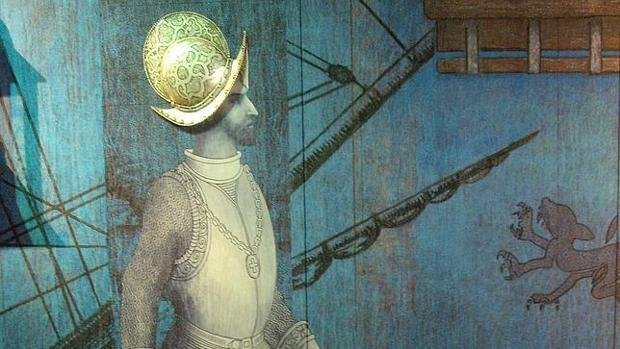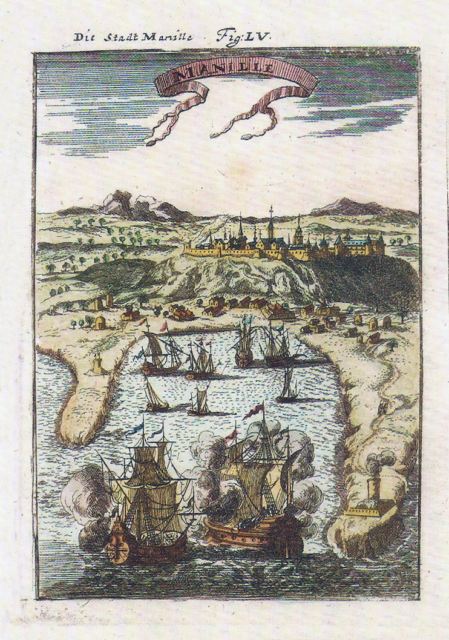The samurai of the Spanish Empire: the epic defense of the Philippines against the Dutch in 1600
Hello Steemit, welcome to another episode in my blog about the history. Today will touch a little more to the Pacific, to Asia and medieval era, the war era between Japanese pirates against the Spanish empire

Every little time the fallacy becomes viral, for the umpteenth time, that the combats of Cagayán (1582) were the first time in which the Western weapons, Spanish for more, imposed on the Japanese. It's false. Beyond that it was really a fight of Japanese pirates against Filipinos, indigenous Mexicans and a handful of Spaniards; we must remember, above all, that this was not the first time that the Europeans and the Japanese confronted each other. Neither the only nor the last...
The Iberian empires fought against samurai and Japanese soldiers of all kinds, but also with them. The Spanish Empire had to ally themselves with strange friends in order to defend their dominion over the Pacific, where the Portuguese Empire, under the sovereignty of Philip II, also maintained a huge commercial empire and numerous enemies. The Crown hired samurai to fight on behalf of Spain against the Dutch and the Chinese uprisings, although they did so as mercenaries.
In the Philippines, Spaniards often had to confront Chinese and Japanese pirates, uprisings of the Chinese population on these islands, and the threat that a unified Japan would turn its eyes to neighboring territories. In addition, at the end of the 16th century the arrival of Dutch and English merchants and pirates became the new favorite threat to Iberian interests. As happened 50 years earlier with the incursions of English pirates in the Caribbean, the Dutch saw in the defenseless Iberian possessions in the Pacific the best way to hurt the giant against which the United Provinces had been fighting for decades in Europe. What began as a local rebellion in the Netherlands had crossed two oceans to acquire the category of international war.
The arrival of Holland to the Pacific

After several attempts to settle in the Pacific, the United Provinces planned in 1599 an expedition that, beyond setting new routes, pursued the main purpose of looting and destroying the Iberian posts. A squadron of four ships under Oliver Van Noort departed at the end of summer to face a hellish journey. In the 14 months it took to reach the Strait of Magellan and go to the South Sea, the squad lost two ships, suffered diseases, misunderstandings and enemy attacks. But finally came against all odds to the waters dominated by the two Iberian empires.
Posing as a French sailor with real authorization, Van Noort obtained provisions from the Spaniards themselves and was allowed to arrive in the vicinity of Manila. The complicated journey had left them without the means to directly attack the Philippine capital, so the Dutch decided to simply block the port from the entrance to the bay. Van Noort sought thus to make merchant ships, mostly Chinese, who came to Manila to sell products and even with a Spanish galleon full of silver.
Certainly, already at that time known as samurai troops in the service of Spain, although it is more accurate to speak only of Japanese soldiers, without specifying their social status. Most of the time they were classified as mercenaries commanded by Spanish officers, although there were also cases of indigenous officers. In this condition they participated in several missions of punishment against the pirates of the zone, among them one against what today is Taiwan. Also, troops of this type were counted in the desperate defense that the Spaniards of Manila organized against the blockade of the Dutch in 1600.
The Spanish attack was going to be desperate and even precarious. The only two ships that dozed in the harbor, the merchant ship (San Diego) and the small frigate (San Bartolomé), were armed with 14 and 10 earth guns
respectively.

The plan of the Spaniards was of an absolute simplicity: they would ram the two ships with the favorable wind and tides against the Mauritius, with no other objective than to break the blockade and sink the main ship. And so it was performed at dawn on December 14. Van Noort ordered anchors to see the Spanish attack, while the second Dutch ship, the weaker Eeridracht, simply moved away from the area of action.

The quick approach led by San Diego left Mauritius out of the game. After the Spanish arquebuses and muskets swept the deck, thirty men under the command of an ensign seized the castle and the enemy banners, which traditionally meant that the ship had been subdued. In fact, when the San Bartolomé arrived to unload its fire against the Dutch ship, the boarding group had to identify itself with shouts so that they did not open fire against friendly soldiers. «Spain, Spain; victory, they have surrendered », they shouted to avoid friendly fire.
The surviving Dutchmen barricaded themselves under cover and asked to surrender. But for some reason unknown today, Morga fell into a state of prostration and allowed the Dutch to think of a flight plan.
A victory that became a tragedy
Parallel to this situation of impasse, the San Bartolomé started the march to hunt down the Eeridracht, which was trying to flee desperately from a distance. Even so, they intercepted him without any doubt as to how to proceed in this case. The commander of the frigate, Juan de Alcega, boarded the ship and took Captain Viesmann and twenty-five other survivors prisoner.
On the contrary, Van Noort ordered to resist the enclosed Dutchmen (26 of them wounded) in the Mauritius and even threatened those who wanted to surrender by blowing up the Santa Barbara if they moved a centimeter. A threat in keeping with the way of proceeding kamikaze typical of the Beggars of the Sea, who preferred to burn or explode their boats before surrendering them to the Spanish Empire. The Dutch knew that the Spaniards were going to execute them as soon as they surrendered, because they considered them pirates, heretics and rebels. There would be no trial. They did not have an easy way out.

In a general assessment, Noort's expedition had been a total disaster and his only victory was, if anything, to save his life when everything seemed lost. The return to Amsterdam was as terrible as the outward journey, anchoring there after three years, on August 26, 1601, when only eight crew members remained alive. However, they became the first Dutch to complete the round the world.

The Van Noort crossing was followed by an authentic Dutch landing in Japan and other Pacific territories. And it would be the Dutch who poisoned the good relations between the Japanese and the Catholics, which would lead to the persecution of thousands of Christians in Japan. However, even in 1606, the participation of mercenary samurai in the suffocation of the rebellion of the (Chinese) sangleyeses of Manila is documented. In this sense, the Dutch also imitated the Iberian strategy and used these mercenaries.
▬▬▬▬
Thanks for watching!!!
▬▬▬▬